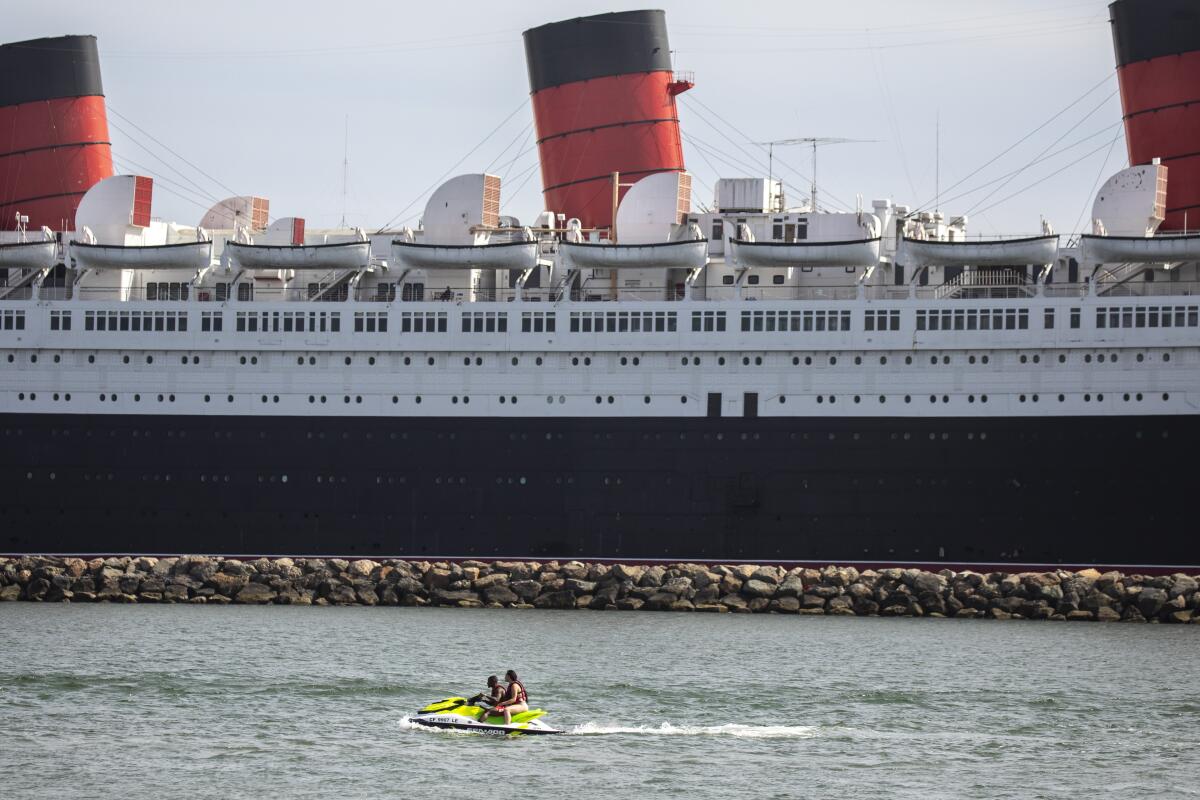A Word Please: The story behind ‘Giant Waves Down Queen Mary’s Funnel’ and other confusing headlines

- Share via
It was the headline that launched a thousand linguistics blog posts: “Violinist Linked to JAL Crash Blossoms.”
In 2009, a copy editor spotted this headline in Japan Today. Then he logged on to an internet language forum to ponder the question: “What’s a crash blossom?”
The rest is linguistics history. What had been a nonsensical pairing of two words became a term referring to just such nonsense. Today, crash blossom means any headline that invites a misreading — especially a ridiculous one.
For example, the Japan Today headline didn’t mean that a violinist is linked to mysterious things called crash blossoms. It meant that a violinist who is linked to a crash is blossoming in her career.
How do we know that? Certainly not from the grammar.
As written, the headline has two meanings — one logical, the other nonsensical. We need logic to tell us which of the two valid interpretations is more likely.
Headline writing, which crams big ideas into very tight spaces, is uniquely vulnerable to such misunderstandings. Lots of well-known examples go back more than a century.
“British Left Waffles on Falklands.”
“Giant Waves Down Queen Mary’s Funnel.”
“McDonald’s Fries the Holy Grail for Potato Farmers.”
“MacArthur Flies Back to Front.”
“Eighth Army Push Bottles Up Germans.”
“Squad Helps Dog Bite Victim.”
Why did Brits abandon their carb-laden breakfasts? Why did the giant need a funnel to wave to the queen? Why did the potato farmers order their grail fried instead of broiled?
Obviously, they didn’t. But the headline writers failed to make that clear.
Headline writing usually chops out little words — articles like “the” and conjunctions like “and” and, more problematically, verbs like “to be” and auxiliary verbs like “have.”
A headline that means to say, “A violinist is linked” usually just says, “Violinist linked.” The “is,” a conjugated form of “to be,” is dropped.
As readers, we’ve come to expect it. So when you see “violinist linked,” it’s logical to assume it means “is linked” and that the words that follow constitute the think she was linked to.
In “McDonald’s Fries the Holy Grail for Potato Farmers,” an omitted form of “to be” is again the culprit. This headline means “McDonald’s fries are the Holy Grail for potato farmers.”
The headline writer left the “are” implied, raising the grammatical possibility that “fries” is the verb and “the Holy Grail” its object.
Sometimes, however, you can’t blame a missing verb. In “Giant Waves Down Queen Mary’s Funnel,” the first three words are all highly versatile. “Giant” could be an adjective or a noun.
“Waves” could be a noun or a verb. “Down” could be an adverb or a verb. The verb form of “down” is so much less common than the adverb form (“He downed his drink”), it’s pretty understandable why you might at first think “waves” is the verb and a giant was the noun doing the waving.
“In everyday spoken and written language, we can usually handle this sort of grammatical uncertainty because we have enough additional clues to make the right choices of interpretation,” linguist Ben Zimmer wrote in a 2010 issue of the New York Times Magazine.
“But headlines sweep away those little words — particularly articles, auxiliary verbs and forms of ‘to be’ — robbing the reader of crucial context.”
Zimmer points out a unique, and I’d say unfortunate feature of our language that helps create these crash blossoms. In English, the letter S is used to form plurals, but it’s also used to conjugate verbs in the third person singular.
She waffles. She likes waffles. This makes it unclear at first that “waffles” is a verb in “British Left Waffles on Falklands.”
These double-take headlines are nothing new. The 1915 manual “Newspaper Editing” warned headline writers confusion “can be avoided only by great care in the use of words with two meanings and especially words that may be used either as nouns or verbs.”
But since 2009, when violinist with ties to a crash blossomed, this old problem finally has a name.
— June Casagrande is the author of “The Joy of Syntax: A Simple Guide to All the Grammar You Know You Should Know.” She can be reached at JuneTCN@aol.com.
All the latest on Orange County from Orange County.
Get our free TimesOC newsletter.
You may occasionally receive promotional content from the Daily Pilot.





